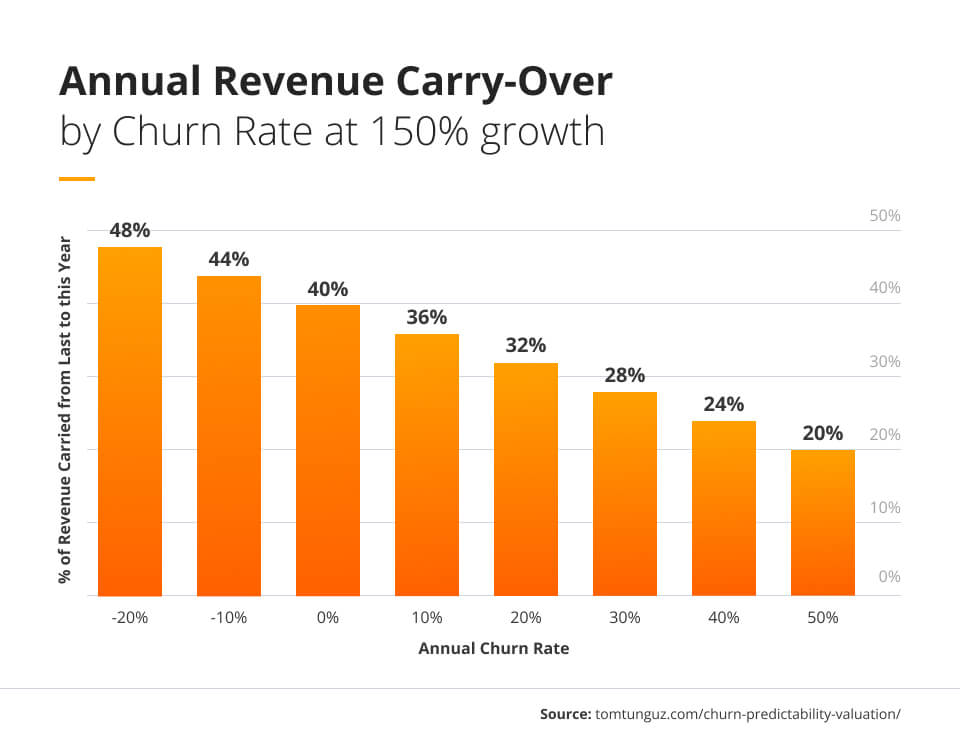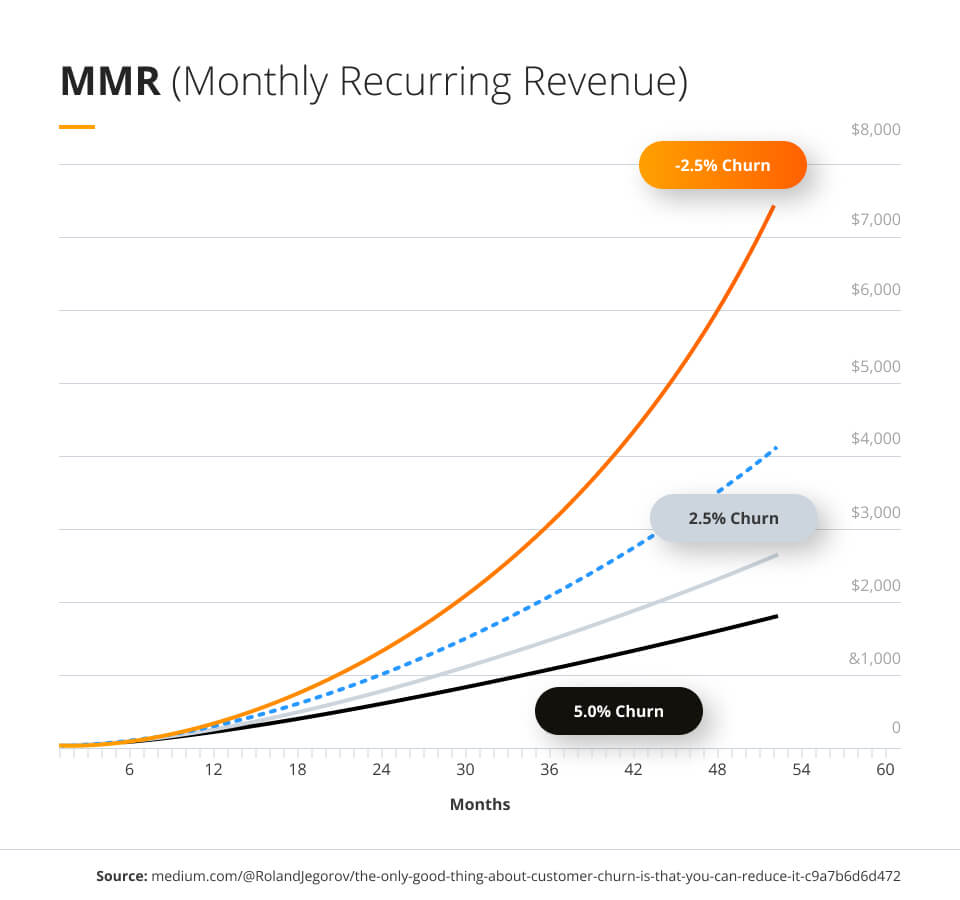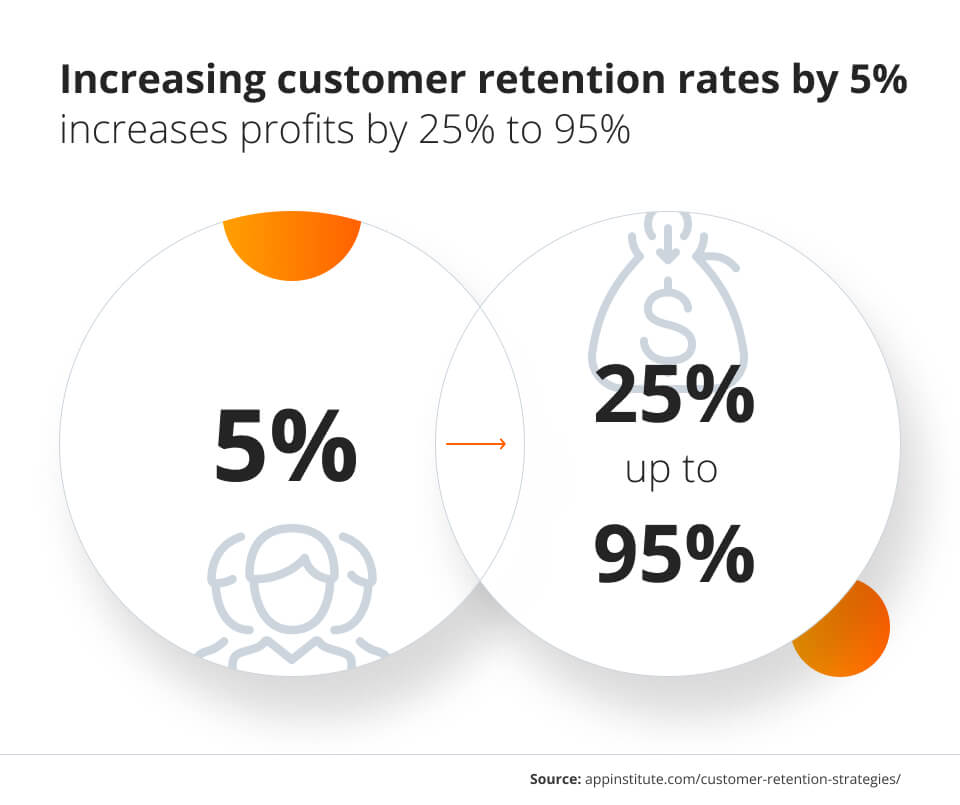
Why should you focus more on reducing your churn rate?
Churn is one of the most important metrics by which a company can be assessed. By reducing customer churn, or the rate at which customers leave a business and neglect giving money to the business, businesses can see rises in profits, consistency, and long-term stability.
Introduction
To understand the importance of reducing customer churn, businesses must understand what churn is and its relevance to business, how to reduce customer churn, and the benefits businesses can tangibly obtain from reducing churn.
To avoid a digital leap of faith and ultimately ensure a successful outcome, it is imperative for C-suite personnel and department heads to be on the same page in order to formulate effective strategies that will reduce customer churn before taking any risks.
What is Churn, and How is it Relevant to Businesses?
The churn rate, also known as customer churn, refers to the percentage of customers that discontinue their service with a company over a given time period. This discontinuance can include customers canceling their subscription to a particular product or service, customers switching to a competitor, or customers ending the relationship for any other reason.
How to Calculate Churn
The churn rate is typically calculated by dividing the number of customers who leave over a given time period by the total number of customers at the beginning of that period.
Reducing customer churn is only possible if companies are able to understand the metric, and a deeper look will be taken at the formula when looking at how to reduce customer churn in the next section.
Why is Churn Important?
Encouraging new customers to stay invested in a product or service and maximize their customer lifetime value is an essential part of modern business. Churn is an important metric used by businesses to measure customer satisfaction and identify areas where they might be falling short in terms of customer service or product quality. Keeping customers is the most important factor for any firm, as ultimately, customers decide whether a firm is a success or failure. In order to improve this situation and avoid losing customers, businesses need to focus on improving their primary product or service offerings and their customer journey in order to reduce churn and attract more customers.
As seen in the graphic, even small percentages of customer churn can be disastrous for a business’s finances. While involuntary churn may be unavoidable, it should be a primary focus for every business to bring their rates as close to negative churn as possible.
Churn Rate for SaaS Businesses
Churn is especially relevant for SaaS businesses. This metric is critical because it can help SaaS businesses to identify trends in satisfaction and determine areas where they need to improve. Since SaaS businesses sit entirely in the digital space, the effects of churn are maximized. However, the benefit to this is that churn can point strongly to tangible trends within a given SaaS business. For example, if the churn rate is increasing over time, it may indicate that customers are dissatisfied with a particular aspect of the service.
On the other hand, if the churn rate decreases after a product update, it suggests that customers are more satisfied with the new features. Thus, by tracking churn rates and using innovative applications to reduce churn, such as Churn Buster, businesses can build stronger relationships with existing and new customers and increase their overall service usage levels. Reducing customer churn to the point of negative churn can give knowledgeable businesses massive competitive advantages.
How do You Approach Reducing Churn?
Customer churn rate is used to describe the rate at which customers stop using a product after a predetermined time. Churn occurs for a company when a customer cancels their service or leaves the company entirely. For businesses large and small, capitalizing on the customer satisfaction of existing customers is vital to higher profits from monthly recurring revenue and other recurring revenue occurrences. As seen in the graph below, a lower churn rate leads to a higher monthly recurring revenue.
Calculate your churn rate
As seen in the equation above, the churn rate equals the customers who left divided by the total customers times 100. For example, take a company with 5,000 customers in total. If 50 people close their accounts in a given time frame, divide 50 by 5,000 to get 0.01. 0.01 multiplied by 100 is 1 percent. Therefore, the customer churn rate of the company in the given time period is 1%.
A churn rate of 1% in one year is excellent. A business should aim to have a customer churn rate of 5% or less throughout the year. If the churn rate of 1% is a monthly churn rate, then the yearly churn rate would be 12%, which is not ideal. Therefore, the key to surviving in a competitive market is understanding how a company’s churn rate relates to the industry average and how that company can take the proper steps in preventing churn.
Research the Target Audience
Understanding a business’s customer base and customer expectations is one of the most effective ways to slow down the amount of churned customers per year. Researching the target audience can allow an organization to create personalized marketing material.
An important method that can be used to improve customer relationships is spending time on social media answering customer inquiries and demands. The most valuable customers are the ones whose voices are heard. Use the advice they give and questions they have to initiate blog posts, formulate topics for webinars, and make social media posts.
Once a business understands the pain points and goals of its current customers, it can achieve excellent customer service due to the ability to keep consumers invested in the brand and prevent involuntary churn.
Master Customer Service and Success
Similar to the method of being active on social media, it is equally, if not more, important to have a competent customer service team to answer questions that customers have about their orders and assist consumers who encounter problems. Assisting customers throughout their customer journey is vital in identifying at-risk customers. As seen in the graph below, the main reason customers leave is due to poor customer service.
Companies with strong customer service and success typically create a training course that all service team members take. Therefore, they are able to efficiently deliver consistent and effective customer service across all aspects of their service department. If anything, service team members should be introduced to the most common questions that customers tend to give. Having employees that reduce customer churn reduces the stress that upper-level management faces when brainstorming methods to reduce churned customers.
It is also important to consider adding chatbots to the company website to help consumers. Leveraging the power of artificial intelligence (AI) and machine learning (ML) can reduce voluntary churn by reducing human error. Finally, remember that customer success is different from customer service. Customer success helps the user get the most from their purchase, which is another valuable experience a company should give to its consumers.
Fine-Tune User Experience
User experience, or UX, is the overall experience that a customer has when navigating a website or computer application. When it comes to UX, it is critical to analyze the perspective of the consumer. Management should test-run the website to make sure the UX is optimal.
Common errors in UX included abnormally long check-out pages, difficulty when finding desired products, and an unaesthetic design. Therefore, a company should constantly take steps to resolve problems with UX. Often, small UX changes significantly impact how often consumers engage with the website.
Predicting and Analyzing Customer Churn Using Software
For larger companies, it is difficult to track all of the causes of customer churn. However, calculating and analyzing customer churn is a common practice that can still be followed to understand the condition of a company. Otherwise, Enterprise Resource Planning (ERP) software can be used to analyze and understand a company’s churn rate from different perspectives. In fact, ERP software can even forecast general methods the organization can take to further limit churn.
With that being said, never let the churn rate go uncalculated and unanalyzed. The more a company calculates and analyzes churn, the more revenue can be generated. Ignoring a simple fix could lead to increasingly larger losses in potential revenue. Overall, ERP software is vital to customer churn analytics and customer insights. Companies are bound to lose customers each year. However, various steps can be taken, and technologies can be used to limit how many customers are lost.
What Benefits do Businesses See From Reduced Churn?
Businesses should not just let customer churn happen and should quickly analyze churn and calculate revenue churn, allowing them to remain vigilant. What benefits actually come from analyzing churn and how to reduce it? Businesses can see the following immediately after they analyze and reduce customer churn.
Increase Profits
A business’s primary purpose is to promote revenue growth and make money. The ultimate goal of a customer churn analysis, then, is to increase profits by lowering customer attrition and lost customers and ensuring a loyal customer base. If customer engagement exists for longer periods of time, the number of customers lost in a given period will decrease, and revenue and profits will follow.
Improve the Customer Experience
One of the worst reasons to lose a customer is a simple and avoidable mistake, like shipping the wrong item to the wrong customer. Understanding why customers churn can help a business learn more about customer priorities through customer feedback, identify the business’ deficits, stop customers from leaving, and improve the overall customer experience.
Customer experience is a customer’s perception or opinion about their interactions with a business. The customer experience is affected throughout the entire journey they take, reflects customer satisfaction from initial contact to customer support after purchases, and can have massive impacts on a company’s long-term outlook.
Optimize Products and Services
If customers are leaving because of specific problems with products, services, or the delivery methods of a company, a few strategies can be used to improve these. Not only will acting on these insights reduce customer churn, but it also leads to better overall products or services that offer incentives to valuable customers and increases the value proposition of the entire company. Increased product or service quality would also lead to improved net promoter score surveys from happy customers that would continue to purchase from the company.
Customer Retention
In contrast to customer churn is customer retention – a business’s ability to not only keep existing customers, but maintain them as a constant source of revenue. This ability can range from the ability to retain one customer to the company’s most valuable customers. Excellent customer retention allows a business to increase the profitability of existing customers and offer incentives to maximize customer loyalty and value.
Using month-to-month contracts, for example, if a company sells a service that costs $1,000 per month, keeping a customer for four additional months means the company can bring in an extra $4,000 in revenue per customer in a given period without spending more money on customer acquisition. Furthermore, yearly contracts increase customer retention as well since they allow for only one purchase decision to be made a year instead of twelve, decreasing the number of chances a customer has to leave and ensuring steady profit.
The most loyal customers are the most profitable; as such, customer success and satisfaction have a direct correlation with the profits a company brings in.
Churn Leads to Higher CAC & Reduced Significant Impact
Regardless of the effectiveness of a company’s marketing strategy and lead generation capabilities, a customer costs money to obtain in the first place. In fact, acquiring new customers is much more expensive than maintaining and enhancing existing customers’ relationships.
The more customers a company churns, whether through voluntary churn or involuntary churn, the more money the company spends to find new ones and recover the loss of existing customers. For example, according to AppInstitute, “studies have shown that attracting a new customer can be up to 25 times more expensive than keeping an existing one.”
CAC can destroy essential revenue and potential financial growth, and the lower it is kept, the better. One way in which this can be done steadily and in a straightforward manner is by actively reducing customer churn.
Conclusion
While dedicated tactics to resolve customer churn reduction have only recently become mainstream practices for businesses, they have vastly grown in their implementation across various industries. Churn strategies have allowed companies to become more innovative and creative, as the reward of potential profits can become maximized without the risk of losing many customers due to any setbacks.
Reducing customer churn can quickly become a difficult and tedious task for businesses, but the long-term importance can not be overstated. By using different techniques to decrease churn rates, organizations can see improvements in customer retention and satisfaction and allow themselves a steady stream of customers for long-term stability. If you are not sure where to start, try our free Request for Proposal template for organizations looking for a data solutions partner who will help you make the most of the data you already possess.
The world is facing unprecedented disruption to supply chains and a possible recession, yet businesses can remain resilient by proactively managing churn in an organized manner. This may prove to be the difference between success or failure for many companies during these turbulent times.










